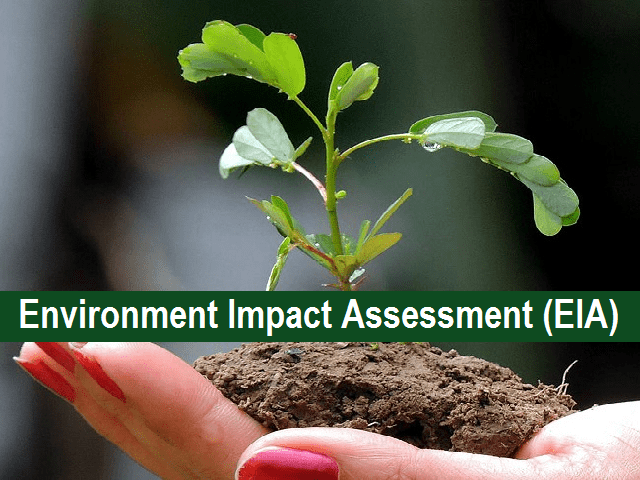By Abdul Quddus Suhaib
Imagine you live in a country where certain laws are being amended. According to the new law, if someone is murdered, the report of that murder can only be lodged by the Murderer himself or the police has to be an eyewitness to it. They amend the criteria of being a doctor, according to it, you can start practicing medicine, you can start prescribing medicines, operating people and can take a degree later. They also amend the process of buying a property, all you have to do is to throw the inhabitants out of the property and wait for 30 days while the owners of the property will have to prove that they have been wrongfully thrown out.
As scary as it sounds, is exactly what’s been proposed in India right now with the new Draft EIA notification 2020. EIA (Environmental Impact Assessment) is an important regulation that prevents industrial and infrastructure projects from being approved or cleared without following the required safeguards. It looks at the potential impact that industry would have at the environment and then a panel of experts would either grant or deny the clearance. 20,000 lives (in the form of the Bhopal gas tragedy, one of the world’s worst industrial disasters) is what it took for this procedure to be implemented. Perhaps it might need 20,000 more for the people to understand the consequences of the present draft. Under the Environment (Protection) Act, 1986, India notified its first EIA norms in 1994, setting in place a legal framework for regulating activities that access, utilize, and affect (pollute) natural resources. Every development project has been required to go through the EIA process for obtaining prior environmental clearance ever since. Now, The Ministry of Environment, Forest and Climate Change (MoEF&CC) has published the draft Environment Impact Assessment (EIA) Notification 2020, with the intention of replacing the existing EIA Notification, 2006 under the Environment (Protection) Act, 1986.
The fundamental problem with the new draft is that is regressive, to a law that is already weak and flawed. In a country that calls itself a welfare state, this draft is pro-corporate, pro-industry, anti-poor, and anti-people. It fosters non-transparency and encourages environmental violations. It does this on various fronts, some of which I will want to draw your attention to. It allows for post-facto approval which means that even if a project has come up without environment safeguards or without getting environment clearances, it could carry out operation under the provision of the new draft EIA 2020 and could apply for clearance at a later stage by paying some fine. It goes against the very principle of assessment and public participation before environment clearance and has provisions that will encourage flagrant disdain for environment safety and will routinely legitimize illegality. This is disastrous because we already have several projects that are running without EIA clearances and what they have done to the Environment. An example is the LG Polymer Plant in Vishakhapatnam, where the styrene gas leak happened on May 7, 2020.It was revealed that the plant had been running for over two decades without clearances.
This draft also smothers the voices of the indigenous, tribals, and the poor by reducing the time for public consultation before approval of any project and in many cases exempting the need for it. The draft proposes to exempt a list of projects (40 different types of industries will be exempted from the need for prior environmental clearance) and projects which are labeled as Strategic, the meaning of which is as ambiguous as the aache din ka jumla, from the ambit of EIA. The draft says that no information on “such projects shall be placed in the public domain”. In the environmental process, public hearing and consultation are an integral part, which gives the right to locals and stakeholders to raise their voice and concern about getting affected by the probable impacts of the project.
It also states that violations can be reported only by the government and the project proponent themselves and not by citizens. The scope for the public to seek legal help from the National Green Tribunal and other authorities has been restricted. This means that the reliance is on the very people who break the law to report the crime.
According to the new draft, the industries that are already large in capacity can expand up to 50% of their current capacity without public consultation. And, Up to 25% Expansion does not require Environment Clearance. The draft vastly increases the validity period of environmental clearance. Mining project validity has increased from 30 years to 50 years. River valley project validity has increased from 5 years to 15 years. And all other project validity from 7, to 10 years.
This draft is a nail in the coffin of cooperative federalism, democracy, and Gandhian values. Like Arundhati Roy says in her new book Azadi “the dismantling of the idea of liberty, fraternity, and equality will be- in fact already is-the the first casualty of the climate crisis”. She also talks about how India is preparing for the coming climate calamity, and gives us a perspective to look at the annexation of Kashmir and NRC with it, as need want to secure the rivers that run through Kashmir and how NRC will create a system of tiered citizenship in which some citizens have more rights than others, it is also a preparation for a time when resources become scarce. So the question which needs to be asked is whether this is in fact the beginning of the unraveling of a “climate apartheid”.

